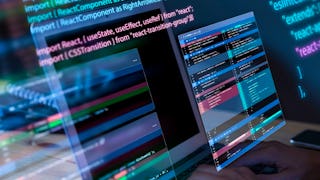This course features Coursera Coach! A smarter way to learn with interactive, real-time conversations that help you test your knowledge, challenge assumptions, and deepen your understanding as you progress through the course.


Expérience recommandée
Ce que vous apprendrez
Remember basic Linux commands and system architecture.
Understand the role of processes, file systems, and user permissions in Linux.
Analyze system performance and troubleshoot processes using monitoring tools.
Create executable scripts and automate tasks using environment variables.
Compétences que vous acquerrez
- Catégorie : Command-Line Interface
- Catégorie : Scripting
- Catégorie : OS Process Management
- Catégorie : General Networking
- Catégorie : System Monitoring
- Catégorie : Linux Administration
- Catégorie : Shell Script
- Catégorie : Operating Systems
- Catégorie : Unix Shell
- Catégorie : User Accounts
- Catégorie : File Management
- Catégorie : Linux
- Catégorie : Linux Commands
Détails à connaître

Ajouter à votre profil LinkedIn
6 devoirs
Découvrez comment les employés des entreprises prestigieuses maîtrisent des compétences recherchées

Il y a 11 modules dans ce cours
In this module, we will introduce the Linux operating system, providing insights on how to run it alongside macOS or Windows. You'll learn how to create Linux containers with Docker, explore essential shell commands, and understand how the system processes user input.
Inclus
10 vidéos
In this module, we will explore how Linux handles processes, including listing and managing them. You will learn to start and kill processes, install the htop utility, and monitor system performance. The module concludes with an overview of process monitoring techniques.
Inclus
6 vidéos
In this module, we will delve into data streams and their default behaviors in Linux processes. You'll learn how to redirect output and errors, manage data flow using STDIN, STDOUT, and STDERR, and leverage piping to connect multiple commands for efficient data processing.
Inclus
6 vidéos1 devoir
In this module, we will cover essential file and directory management in Linux, from navigating the file system to creating, removing, and editing files. You will also learn how to filter text using the grep command, explore links, and manage files efficiently using tools like Vim, Nano, and linking techniques.
Inclus
12 vidéos
In this module, we will introduce search operations in Linux, focusing on the powerful find command. You'll learn to perform advanced file searches, execute commands within search operations, and use the Xargs command to pipe results for further processing. This section empowers you with efficient file-handling techniques.
Inclus
6 vidéos
In this module, we will cover essential file compression and sorting techniques in Linux. You'll learn how to compress and extract archives using tar and gzip, and efficiently organize files by sorting them with the ls and sort utilities, streamlining file management tasks.
Inclus
4 vidéos1 devoir
In this module, we will explore user management and permissions in Linux. You'll learn how to create and manage users, assign ownership of files, and adjust file permissions to ensure secure and controlled access within the system.
Inclus
5 vidéos
In this module, we will focus on scripting in Linux, guiding you through creating executable scripts and adding them to the PATH for easy access. This section also provides a comprehensive summary of key concepts like user management, permissions, and scripting.
Inclus
3 vidéos1 devoir
In this module, we will explore the basics of networking in Linux, covering IP address management, verifying connectivity, and securing remote connections using SSH. You'll also learn how to use powerful utilities like curl and wget to interact with web servers and download files efficiently.
Inclus
6 vidéos
In this module, we will explore the concept of environment variables in Linux, focusing on how they influence system processes and script execution. You'll learn how to access and manipulate these variables within scripts to find solutions and optimize workflows.
Inclus
2 vidéos1 devoir
In this module, we will provide a comprehensive summary of the entire course, revisiting the core topics and skills learned. This final section will help you consolidate your understanding of Linux fundamentals and prepare you to apply these skills in practical environments.
Inclus
1 vidéo2 devoirs
Instructeur

Offert par
En savoir plus sur Support and Operations
 Statut : Essai gratuit
Statut : Essai gratuit Statut : Prévisualisation
Statut : PrévisualisationSimplilearn
 Statut : Essai gratuit
Statut : Essai gratuitAkamai Technologies, Inc.
 Statut : Essai gratuit
Statut : Essai gratuit
Pour quelles raisons les étudiants sur Coursera nous choisissent-ils pour leur carrière ?





Ouvrez de nouvelles portes avec Coursera Plus
Accès illimité à 10,000+ cours de niveau international, projets pratiques et programmes de certification prêts à l'emploi - tous inclus dans votre abonnement.
Faites progresser votre carrière avec un diplôme en ligne
Obtenez un diplôme auprès d’universités de renommée mondiale - 100 % en ligne
Rejoignez plus de 3 400 entreprises mondiales qui ont choisi Coursera pour les affaires
Améliorez les compétences de vos employés pour exceller dans l’économie numérique
Foire Aux Questions
Yes, you can preview the first video and view the syllabus before you enroll. You must purchase the course to access content not included in the preview.
If you decide to enroll in the course before the session start date, you will have access to all of the lecture videos and readings for the course. You’ll be able to submit assignments once the session starts.
Once you enroll and your session begins, you will have access to all videos and other resources, including reading items and the course discussion forum. You’ll be able to view and submit practice assessments, and complete required graded assignments to earn a grade and a Course Certificate.
Plus de questions
Aide financière disponible,

